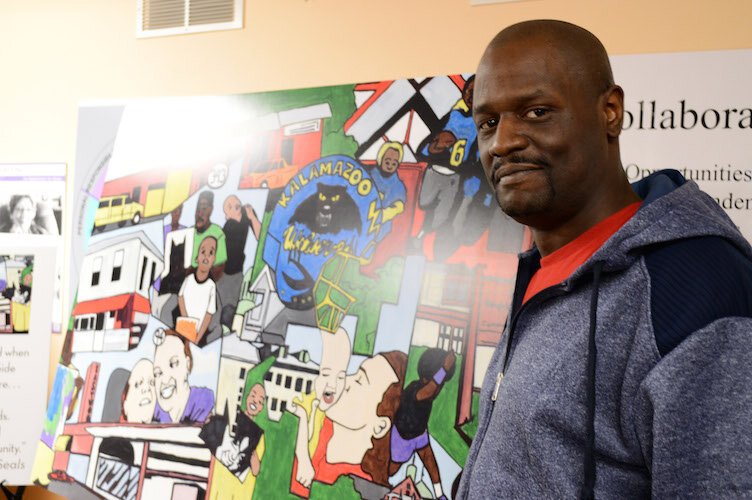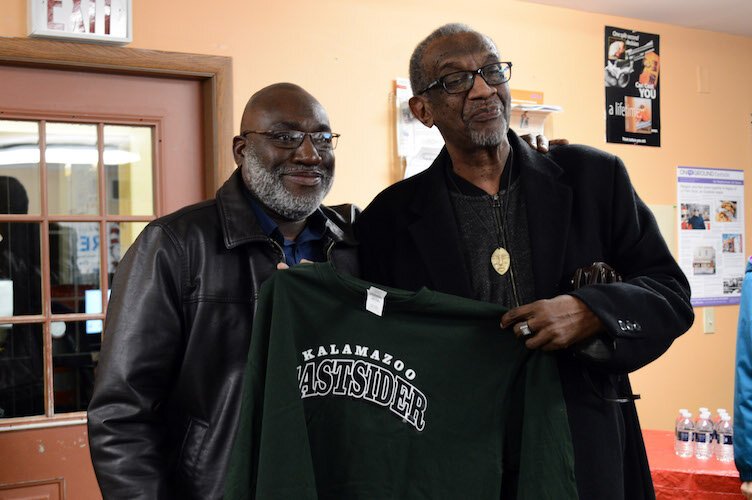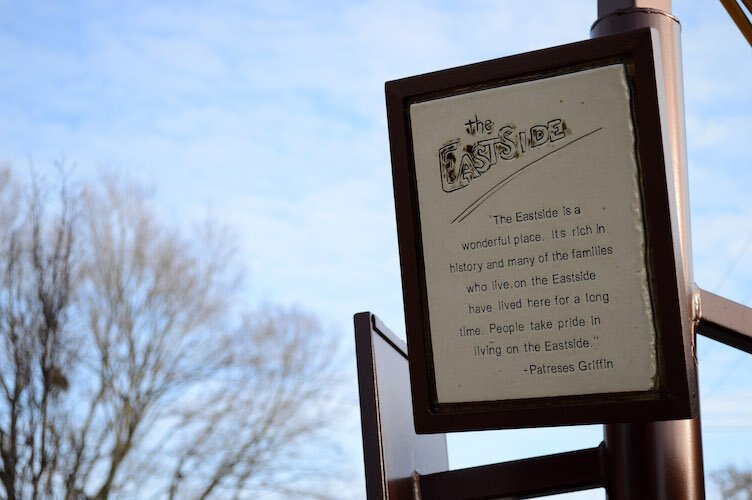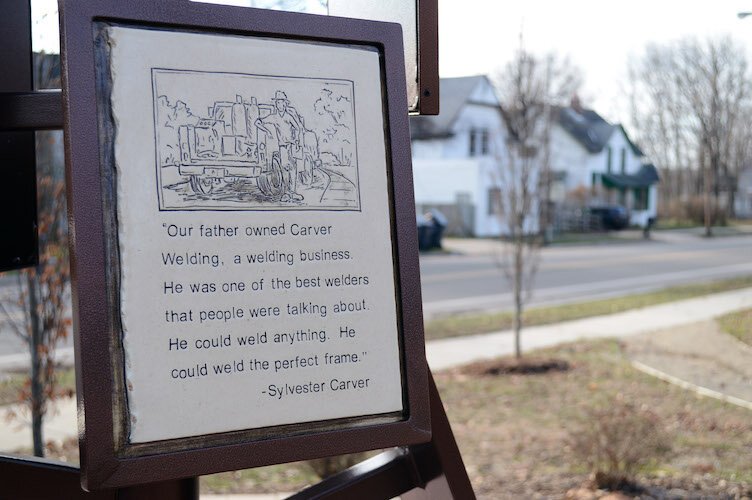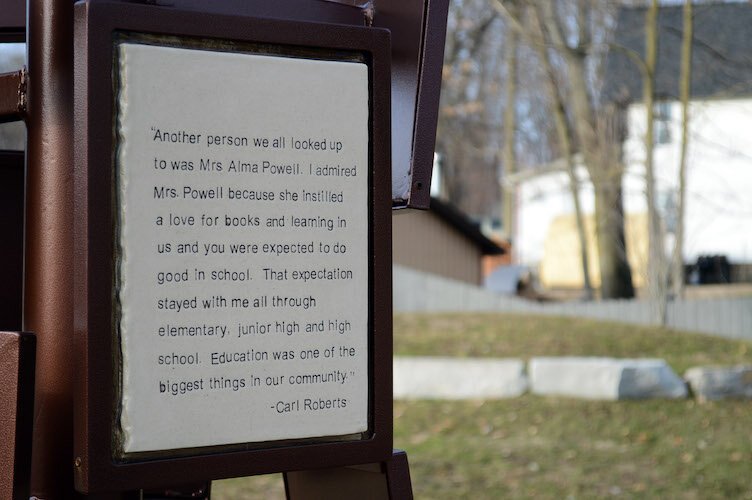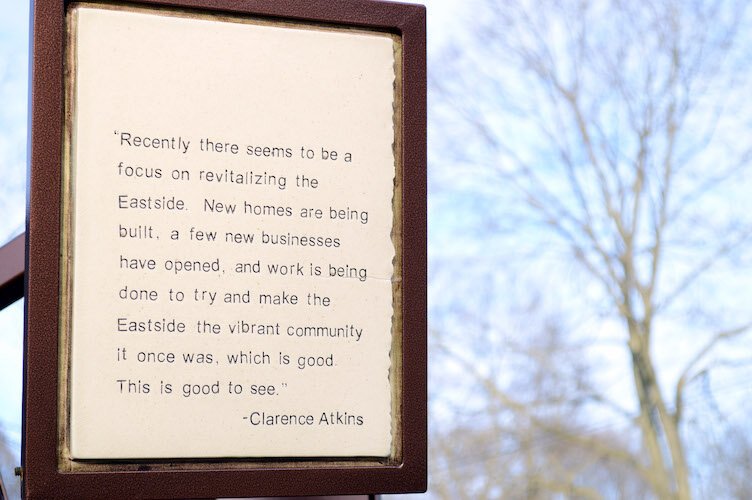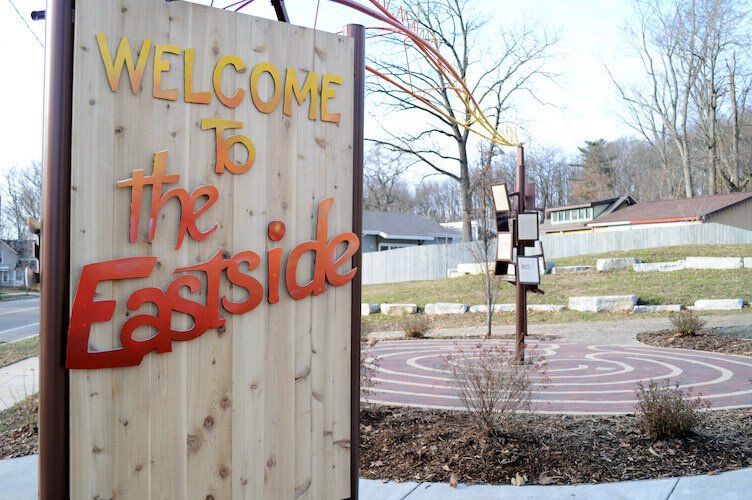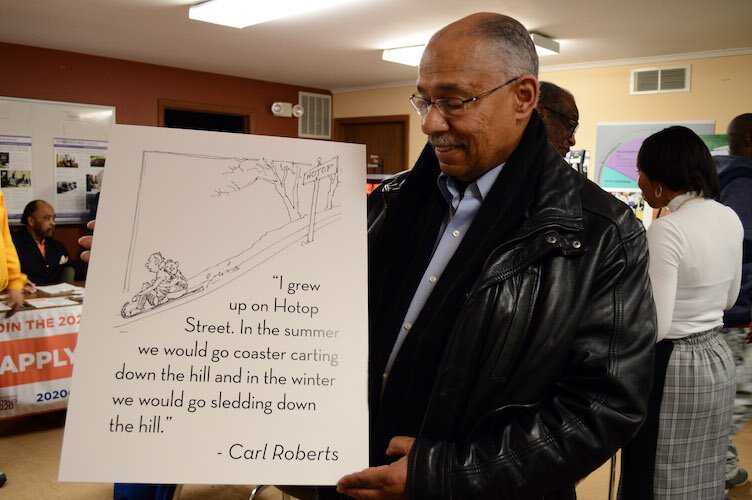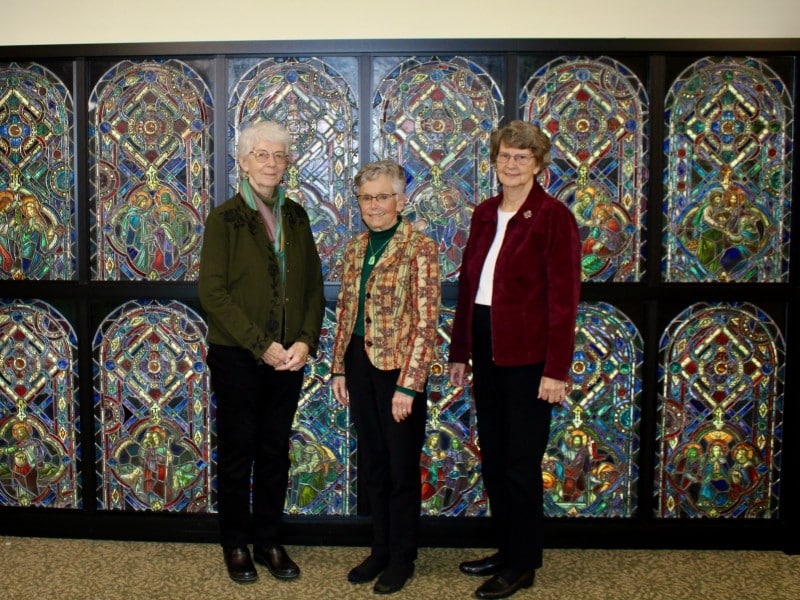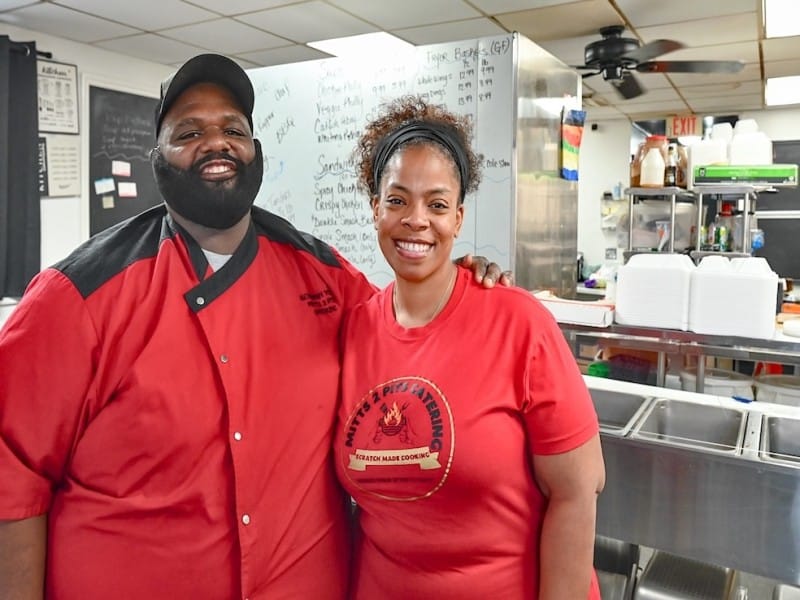Eastside Voices: Oral history project captures neighborhood stories for book and video
Remembering the Eastside's past and looking ahead to its future come together in the oral history project "Eastside Voices."
Two things became obvious when the Kalamazoo County Land Bank joined the Eastside Neighborhood Association to interview current and former residents who’ve lived in the diverse neighborhood as far back as the 1940s: The Eastside is not the same as it was in the 1950s, ’60s and ’70s. And back then, neighborhoods, and life in general, provided a different experience for a kid.
Childhoods of the past and struggles of the present are highlighted in the “Eastside Voices” oral history project, in a book and on video.
Since this was an intergenerational project, Mya Love Boyd, 13, did most of the interviewing for “Eastside Voices,” asking questions of 13 of the 17 Eastsiders in the book and much of the video.
She learned a couple things from the older folks who grew up in the neighborhood.
“I learned that it was thriving more than it is now, how there was a lot more things happening, more stores, just altogether a better community, a more connected community,” Boyd says.
And were kids back then the same as kids now?
“Definitely not,” Boyd says bluntly. “Since technology is a lot more expanded, now there are phones, they’re more into that than how, back then, you had to find activities outside, where you hang out more.”
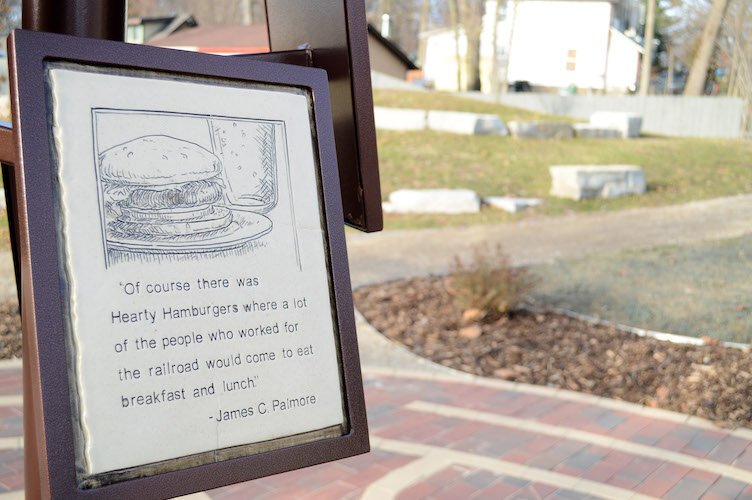
An intergenerational project
The kids of Eastside past had memories of playing in neighborhood woods, walking to nearby grocery, drug or department stores, eating at neighborhood restaurants like Hearty Hamburgers, and going to school at Roosevelt — all gone now.
They’d make use of the Eastside’s steep hills with sleds in the winter, cardboard on grass in the summer; riding bikes, skateboards and homemade coaster-carts on the streets. A couple of the now-grown kids had stories of flying their bikes down Hotop Avenue hill to skid to a stop in the middle of Riverview Drive, to the horror of adults then and now.
There was some segregation in the neighborhood, but the adults remembered how black and white kids would play together and weren’t aware of racism until they got older or until the shadow of national flashpoints, like the assassination of Martin Luther King, fell over the Eastside.
It sounds a bit like a hazy Norman Rockwell-like nostalgia, but the “Eastside Voices” project is also connected to the efforts to bring about a new, improved neighborhood in the 2020s.
The project sprang from a local delegation organized by the Kalamazoo County Land Bank in 2018, attending a Macon, Ga., event looking at creative approaches to activating vacant spaces. Delegation member Belinda Tate, executive director of the Kalamazoo Institute of Arts, pointed to an example of an oral history that she was involved with before coming to Kalamazoo, of a Winston-Salem, N.C., housing development.
The Kalamazoo County Land Bank had also joined the Eastside Neighborhood Association on the Eastside Gateway Project, creating a pocket park and new homes on vacant land.
“Eastside Voices” would become not only a book and a Public Media Network video of interviews, but elements would also go into the new pocket park to be a reminder of the neighborhood’s history.
To connect the history of the neighborhood with the new developments, Pat Taylor, executive director of the Eastside Neighborhood Association and “Eastside Voices” project leader, reached out to local storytellers and Eastside residents Buddy Hannah and Sid Ellis to conduct the oral history project.
Taylor suggested that youth from the neighborhood do much of the interviewing, Hannah says.
“And we thought it’d be nice to have this intergenerational thing, because that way the young people would get to interact with some of the elders,” he says.
“Unfortunately we didn’t get as many young people as we wanted,” Hannah says, so they decided to open it up to any local youth who wanted to be involved. Knowing that Mya Boyd had written and published “The Magic Book,” when she was 9, he reached out to her. Kids were also on the crew of Public Media Network’s video of the interviews. (Airdate/posting TBA.)
Boyd, who’s a prolific author of prose and poetry, was a student at the Gagie School at the time of the interviews, now homeschooled. She says she learned a lot about interviewing, note-taking, “all different kinds of things,” Boyd says.
Hannah says, “She did an excellent job at interviewing. We gave her some pointers, some training, but she was a natural, really.”
What did he learn from the project? Hannah laughs. “Well, I learned a lot more history about the Eastside!”
He says, “It’s made people aware not only of the history of the Eastside but made them aware of the different things people are trying to do on the Eastside, in terms of making improvements and making life better for all residents of the Eastside.”
“For so many years the Eastside has kind of been, I wouldn’t say ignored, but maybe overlooked somewhat,” he says. The beautification and new homes of the Gateway project should help rejuvenate the neighborhood — “That brings in new businesses, if the neighborhood is thriving.”
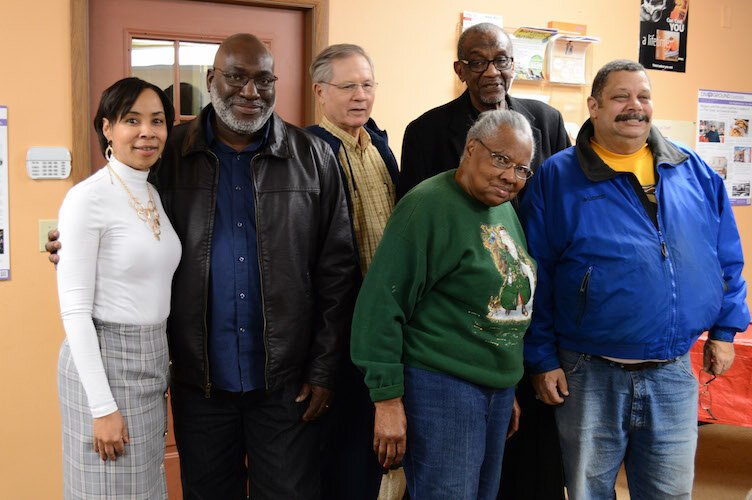
Nostalgia for the old Eastside; efforts for a new Eastside
The PMN video and the first proofs of the “Eastside Voices” book were shown to a packed house on Eastside’s first Art Hop event, Dec. 7, at the Eastside Neighborhood Association.
Murmurs and chuckles of nostalgia came from the audience throughout, such as when Ailene Buchtrup said Eastside was “a happinin’ place” in the late ’60s with kids on skateboards towed by older kids on mopeds.
Hearty Hamburgers got a big response — in its early days workers from the railroad would eat there, and it is said that Hearty made The Whopper before Burger King.
And there were those crazy downhill bike runs — “I wouldn’t recommend that today,” Dennis Johnson says in the video of his zooming into Riverview Drive nearly 60 years ago.
Artist Gerald King was showing his painting “Memories of the Eastside” at the event; it’s used as the cover of the book and is in mural form on 1616 East Main. It shows his memories of being an Eastside teen in the ’90s — the helmet of his Rocket football team, Borgess Hospital where his aunt worked, the MetroTransit bus his mom drove, and the faces of his many neighbors.
“I always liked the diversity of people that lived in this area, all different shapes, sizes, colors, and just the whole community aspect of it,” King says.
“I’ve seen this neighborhood change. It’s up and down, like every neighborhood.” Some businesses closed, and a lot of people moved away, King adds.
“It’s a lot of nostalgia,” Taylor says after the showing.
“It affirmed the impression that I had of the Eastside…. We might not be as boisterous as some other communities, but we care about the people in our neighborhood. And we take care of them when we can, and there’s a pride here that you don’t see very often for a neighborhood. Not only now, but especially in the past,” she says.
“Folks want to hang onto that feeling of, I want to say, of a village. A village feel, where everybody knows everybody — they don’t necessarily have to be best buds, but at least they know who each other are, and can empathize when somebody’s having issues.”
Does Eastside still have that old-fashioned neighborhood feel? “That old-fashioned neighborhood, without the stores!” she says, laughing.
After the nostalgia, the interview subjects seem to agree that, starting in the 1980s, businesses left, and people left as schools and churches closed.
“Yup,” Taylor says. “The ones that were able to stay, they were determined to stay. We have a lot of families who’ve inherited their homes, which is why our organization is very adamant about not only new builds but rehabbing of some of these homes that’ve been in families for generations, or that are historically significant.”
“It’s good to mix the history with the modern.” She promises no gentrification. Taylor is skeptical of “that urban renewal theory — we saw how that works!” she says with a laugh.
The association is hoping to find the balance between improving a neighborhood, and keeping it affordable, Taylor says. “It’s quite the balancing act, but I am of the firm belief that it can be done, you just have to think more out-of-the-box, be more creative about it, not do the same thing that failed before.”
Taylor is reminded of her husband’s favorite quote: “Insanity is doing the same thing and expecting different results!”

